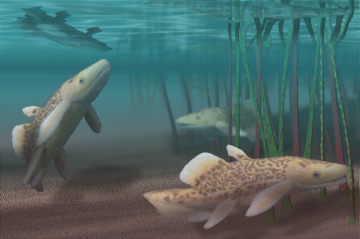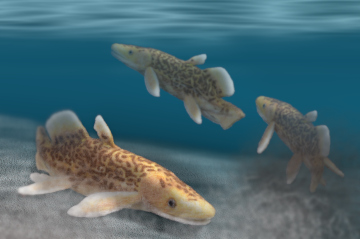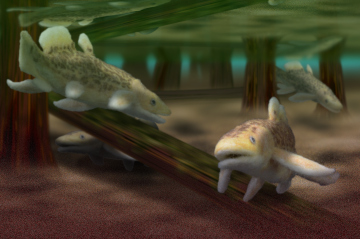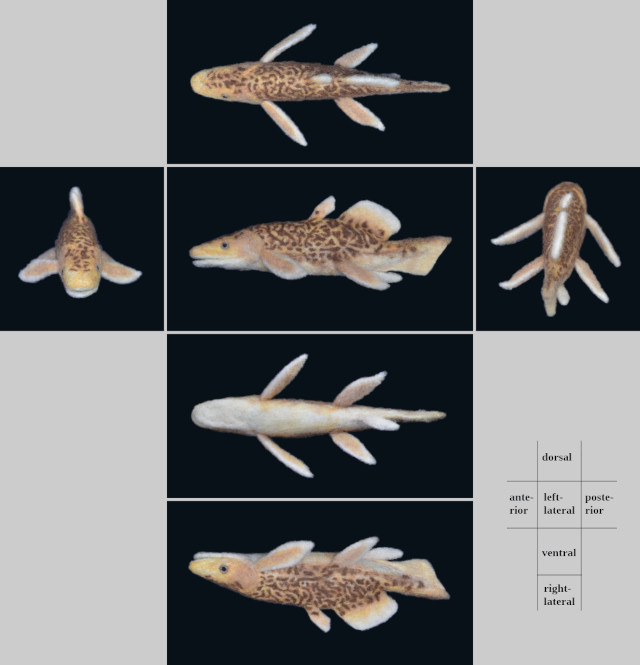Fleurantia denticulata
The sarcopterygian lungfish appeared in the Early Devonian, and their diversity increased by the Late Devonian, but the extant groups are only three genera and six species 3). Only two species, Fleurantia denticulata and Scaumenacia curta, are known from the Late Devonian Escuminac Formation of Miguasha 3), Canada, which is known for many Devonian fossils 1), 2), 3).
Fleurantia, like Scaumenacia, has the typical Devonian lungfish fins, that is, two dorsal fins, a caudal fin, an anal fin are indepentent, whereas the lungfishes after the Devonian, like exant species, have a long fused median fin 1), 2).
The first dorsal fin is reduced in Scaumenacia, while in Fluerantia the first one is thin but alomost as tall as the second 1). The caudal fin is a reduced heterocercal 1). In terms of the overall balance of the body, it appears to be too small for more than Scaumenacia.
The ecology of Fleurantia is obscure, but it probably preyed on small invertebrates, as did Scaumenacia. Also, there is no evidence that Fleurantia dug burrows 2), 3).
created in July 2022 - February 2023.
References:
- Arratia G, Schultze HP, Casciotta J (2001) Vertebral column and associated elements in dipnoans and comparison with other fishes: Development and homology. [abstract] J. Morphol. 250(2): 101-172. (DOI: 10.1002/jmor.1062) (The full-text was reffered to ResearchGate.)
- Cloutier R (1996) Dipnoi (Akinetia: Sarcopterygii). In: Schultze HP, Cloutier R editors. Devonian fishes and plants of Miguasha, Québec, Canada. München: Verlag Dr. Pfeil. p.198 –226. (The full-text was reffered to ResearchGate.)
- Dipnoi, Fleurantia (From water to land - Miguasha National Park -).





